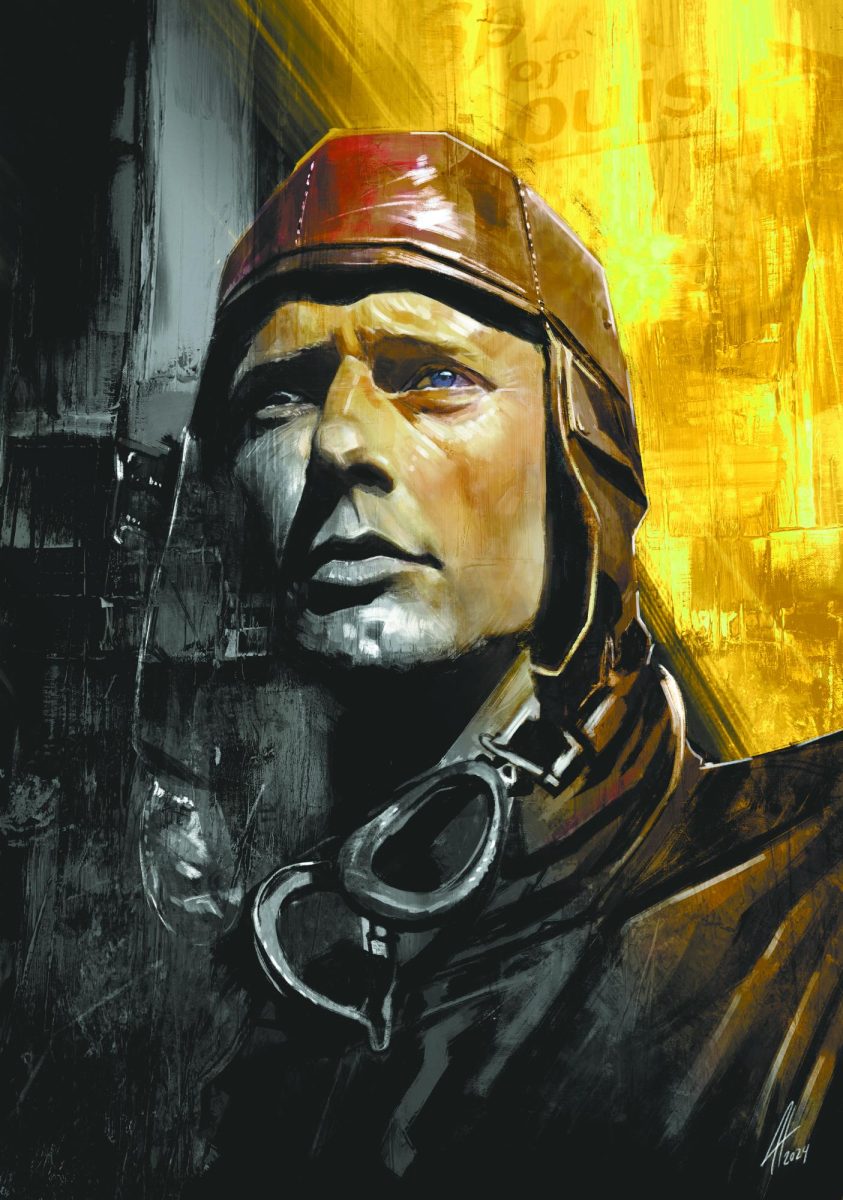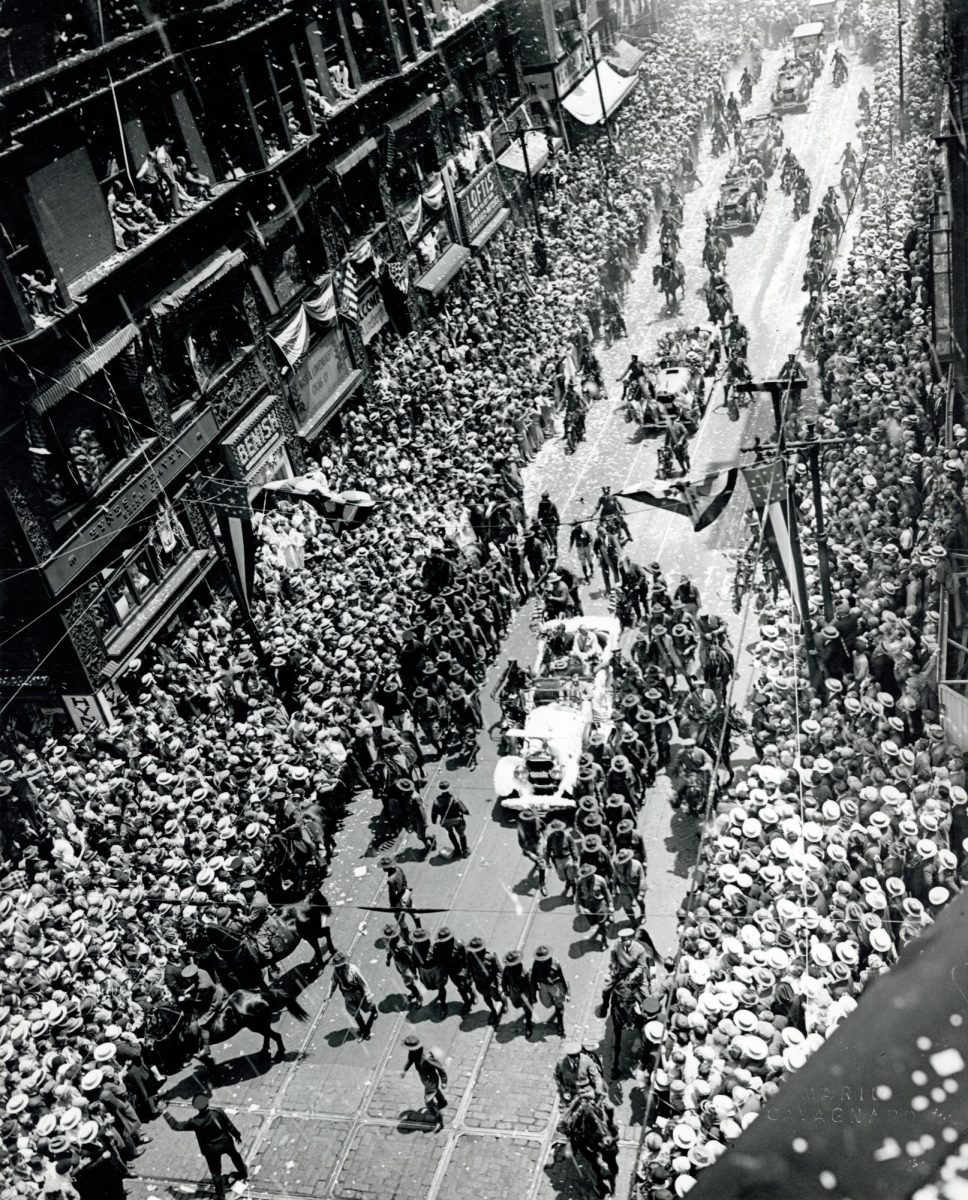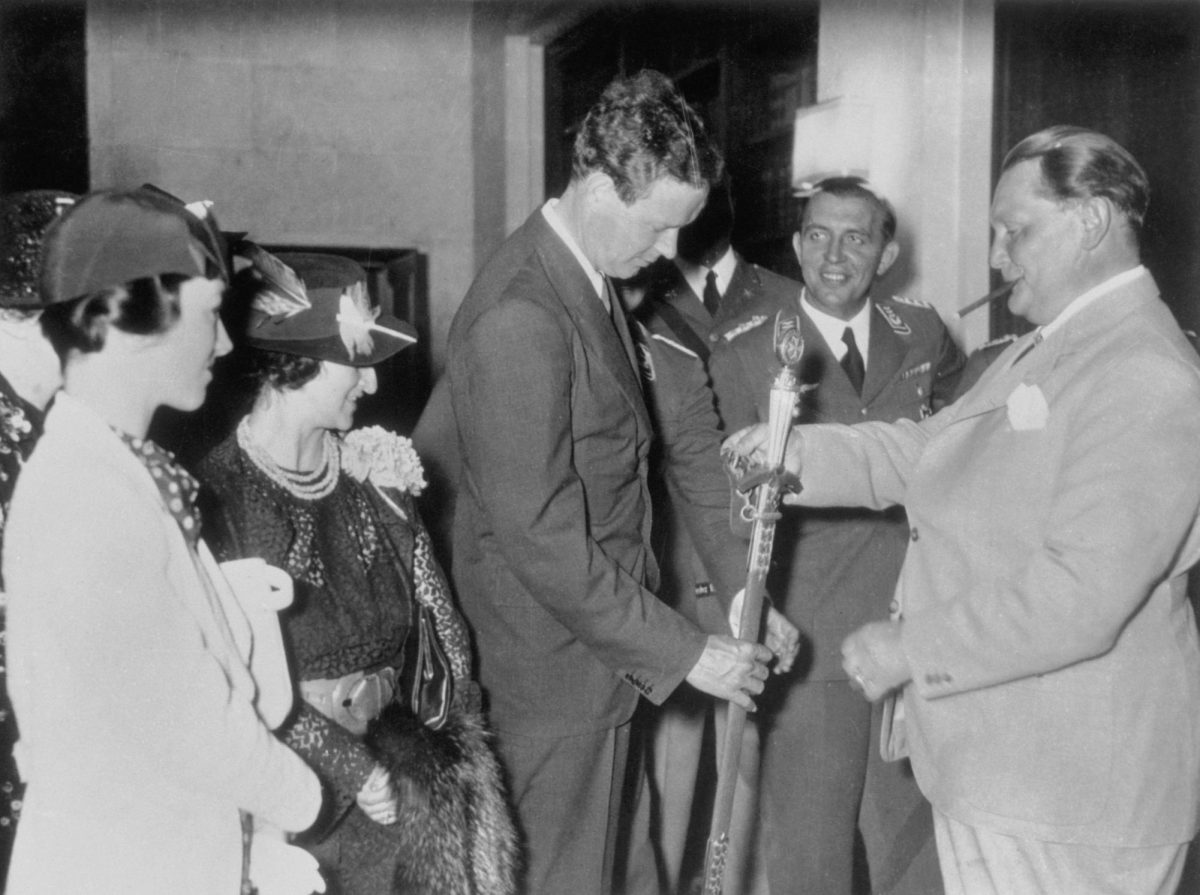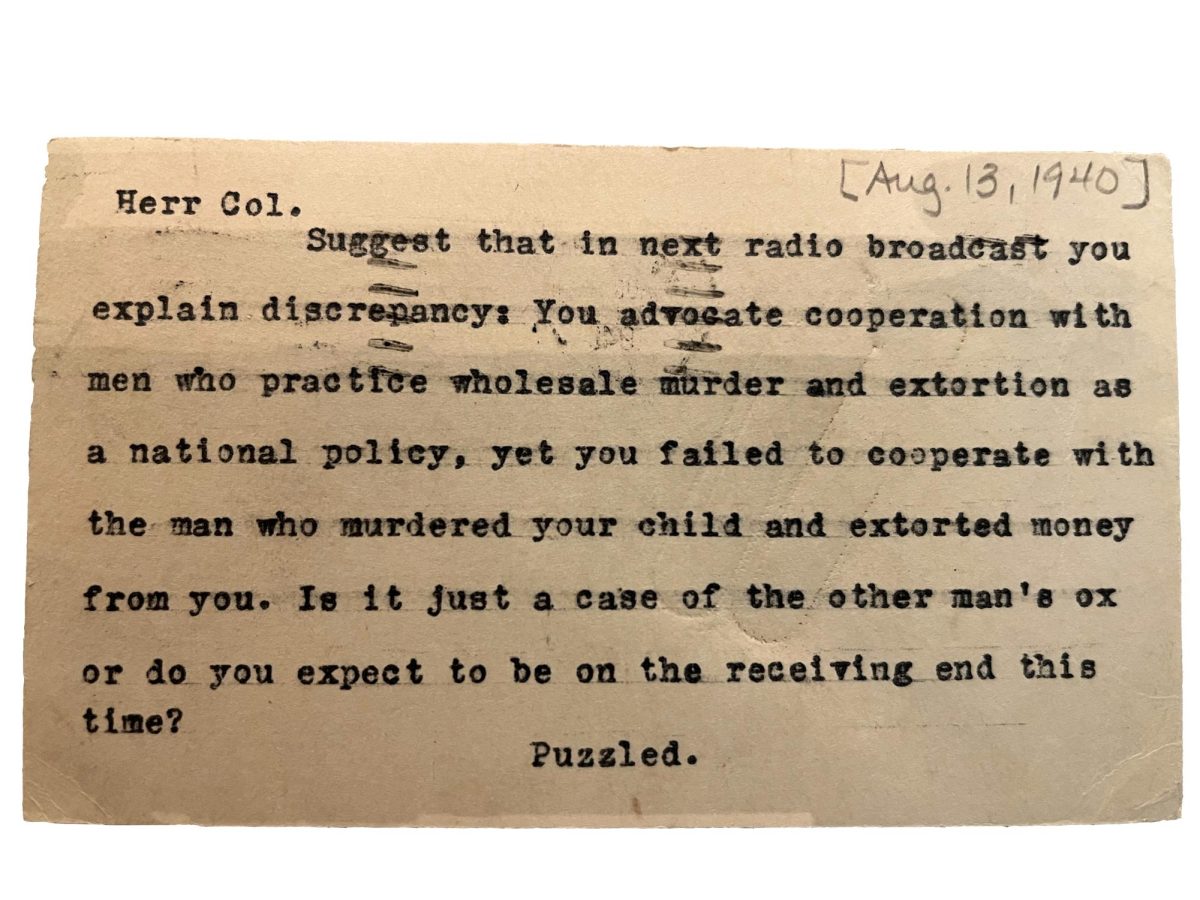On Dec. 13, 1930, about 2,000 people representing the elite of St. Louis society gathered at the Bridle Spur Hunt Club in Huntleigh Village to celebrate the dedication of a newly paved highway. What was once Denny Road was re-named Lindbergh Boulevard.
The luncheon at the club included speeches from state senators, representatives, judges and mayors. It was followed by two “processions of automobiles’’ that convened at Kirkwood High School where alumni of Kirkwood and Webster Groves High Schools played a game of football, according to the Naborhood Link News.
All that fanfare was in honor of Charles A. Lindbergh, the aviator who made history by flying solo across the Atlantic Ocean in 1927 in a plane named the “Spirit of St. Louis.” Lindbergh didn’t attend the dedication ceremonies in 1930. But his ties to the region come from his stint living here from about 1926 to mid-1927. It was in St. Louis that he nurtured relationships with a handful of wealthy aviation aficionados who ultimately provided the funding Lindbergh needed to buy the plane that would launch him into history.
ADVERTISEMENT
Just 11 years after Lindbergh Boulevard was named, a new movement was afoot to change the name back to Denny. By 1941, the high regard Lindbergh had enjoyed for so long was besmirched by his opposition to entering World War II and by his open disdain for Jews.
That name change never happened. Nor has there been any calls to do so since.
Yet the past few years, American society has re-examined how we think about the legacy of slavery, racism and the Native American genocide. There is little evidence that a similar examination has occurred with people who espoused a different kind of hate: antisemitism. As a result, Lindbergh — and many men like him — get to keep their legacy, and the broader culture doesn’t question it. His views are excused because he was simply a man of his time.
“I wouldn’t say that St. Louis has a love affair with Lindbergh,” said Frances Levine, former CEO and president of the Missouri Historical Society. “I’d say St. Louis has an unexamined relationship with Lindbergh.”
ADVERTISEMENT
It’s relatively easy to scrutinize the legacies of Christopher Columbus, Andrew Jackson and even King Louis IX, St. Louis’ namesake. Each of those men’s accomplishments came at the violent expense of other people. But Lindbergh represents a different kind of hatred, one that isn’t as easy to villainize.
In a few years, the world will once again recall the amazing feat of a single person flying from New York to Paris, paving the way for modern commercial and private aviation. To mark the centennial anniversary of Lindbergh’s flight on May 21, 2027, there will probably be exhibits in museums, commemorative films and articles written about the aviator’s adventures and the tragic kidnapping and murder of his first-born son.
But Lindbergh’s legacy is complicated. He had great admiration for Nazi Germany and Adolf Hitler. He was ardently opposed to U.S. involvement in World War II and was on the lecture circuit in the 1930s and early ’40s of the America First Committee, the foremost isolationist pressure group of that time. His unprecedented celebrity status meant he had a microphone and he used that microphone to subtly and, eventually, overtly voice antisemitic opinions.
Many years after his death, it was discovered that Lindbergh had at least two other families from affairs that started in the 1950s in Germany — ties that his American family knew nothing about.
Before the centennial commemoration of Lindbergh’s flight, it’s time to step back and take Levine’s advice: Examine our relationship with Lindbergh, understand his attitudes about Jewish people and reconcile what it means today that we aren’t questioning his legacy of antisemitism.
A very brief history lesson
Lindbergh was born in Detroit in 1902 and grew up in rural Minnesota, the son of a U.S. congressman. As a young man, he fell in love with aviation. He learned to fly and served in the U.S. Army Air Service. He worked as a barnstormer in the early 1920s, showing off his fearless flying capabilities to crowds across the Midwest.
In the mid-1920s, he landed a job with the U.S. Postal Service, establishing the first air mail routes between St. Louis and Chicago. The job based him in St. Louis where he befriended some of the city’s wealthy aviation fans, including at least one name still recognizable today: Albert Bond Lambert, namesake of the city’s airport.
Aviation was a young, untested technology in the 1920s and there was a lot of anticipation to see who could be the first to fly solo across the Atlantic Ocean. There was, in fact, a literal competition for the feat: The $25,000 Orteig Prize.
Lindbergh was determined to win the prize.
He turned to the connections he had made in St. Louis. In all, nine men (none Jewish) footed the money Lindbergh needed to develop the airplane that would propel him into the history books and into a paparazzi-plagued celebrity status the likes of which the country had never seen before.
He called his plane the Spirit of St. Louis.

Lindbergh maintained ties with his St. Louis friends after he completed the transatlantic flight, but his direct connection to the region mostly ends there. Still, it wasn’t long before the region’s leaders wanted to honor him — for the first time. On Dec. 4, 1930, the St. Louis County Court (now the County Council) passed the resolution to rename Denny Boulevard, Lindbergh Boulevard.
Lindbergh and his wife, Anne Morrow, garnered even more fame when their first-born child was kidnapped — and murdered — in 1932. The subsequent trial of the kidnapper in 1935 (and his execution, in 1936) grabbed the country’s attention in a manner akin to its obsession over O.J. Simpson’s trial 60 years later.
Lindbergh found the limelight of fame exhausting. After the kidnapping trial, he received threats against his family. So, in the mid-1930s, he moved to Europe, settling in a cottage about an hour outside London, where he worked with Pan American World Airways and pursued other scientific interests.
At the behest of the U.S. State Department, Lindbergh accepted invitations to tour German airplane factories, test state-of-the-art fighter planes and review the country’s air force. He felt certain no other nation could compete against Germany’s air power. In 1936, he was the guest of Field Marshal Hermann Göring at the Berlin Olympics. Two years later, Göring gave Lindbergh, on behalf of Hitler, the Service Cross of the German Eagle — a medal that Lindbergh kept for years and later bestowed to the Missouri Historical Society, along with acres of correspondence, diaries and other mementos from his life.
He visited Nazi Germany six times between 1936 and 1938 and wrote effusively about how ordered the country was.
“I have come away with a feeling of great admiration for the German people,” he wrote to his friend Truman Smith after his first visit. “The condition of the country, and the appearance of the average person whom I saw, leaves with me the impression that Hitler must have far more character and vision than I thought existed in the German leader who has been painted in so many different ways by the accounts in America and England.”
The Lindberghs enjoyed their time in Germany so much that they were planning to move to Berlin in 1938 and had even found a house to stay in. But the events of Nov. 9, 1938 — Kristallnacht — changed their plans. Lindbergh wrote to a friend that he didn’t want to take any actions “which would seem to support the German action in regard to the Jews.” Then, as Hitler’s aggressions into the Sudetenland and Czechoslovakia pushed Europe into war, the Lindberghs moved back to the U.S. in 1939.







